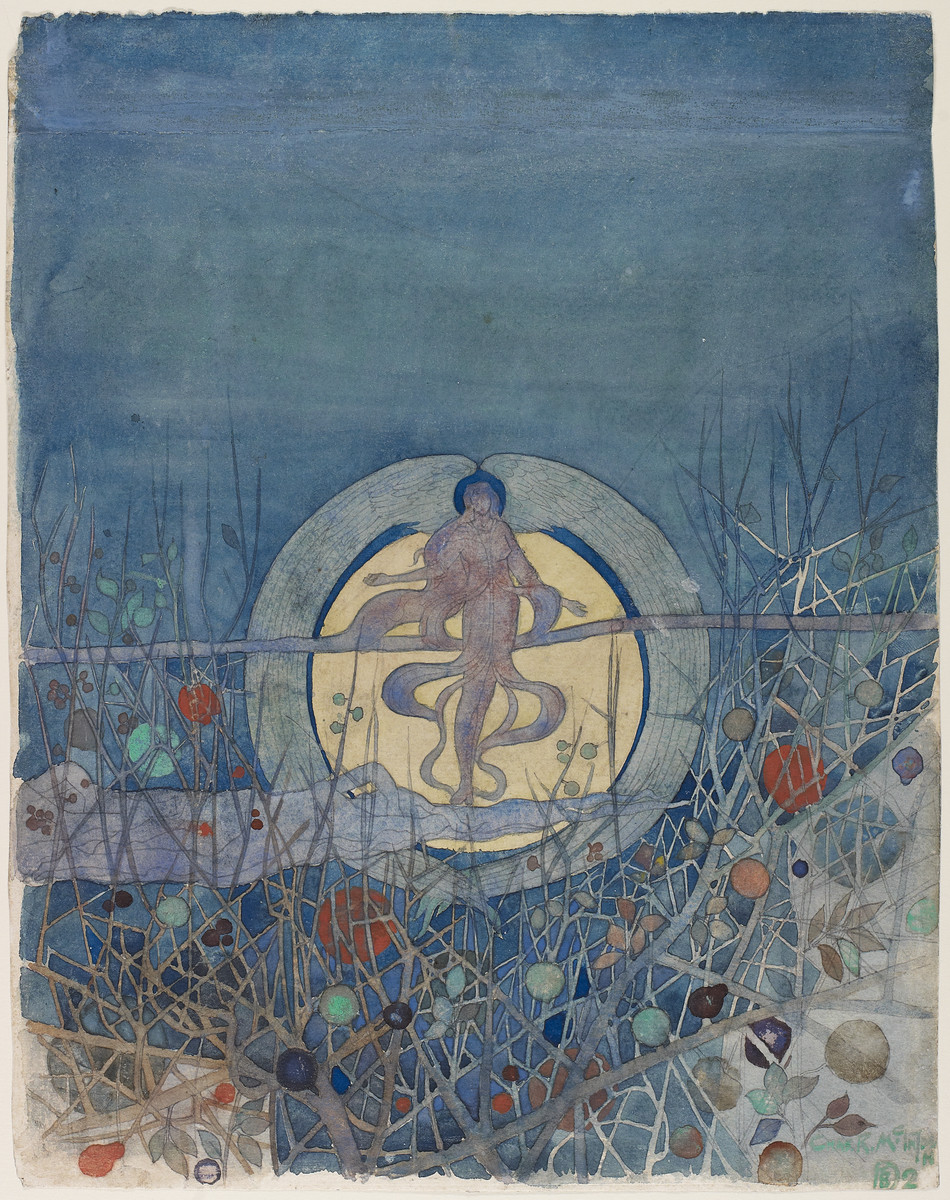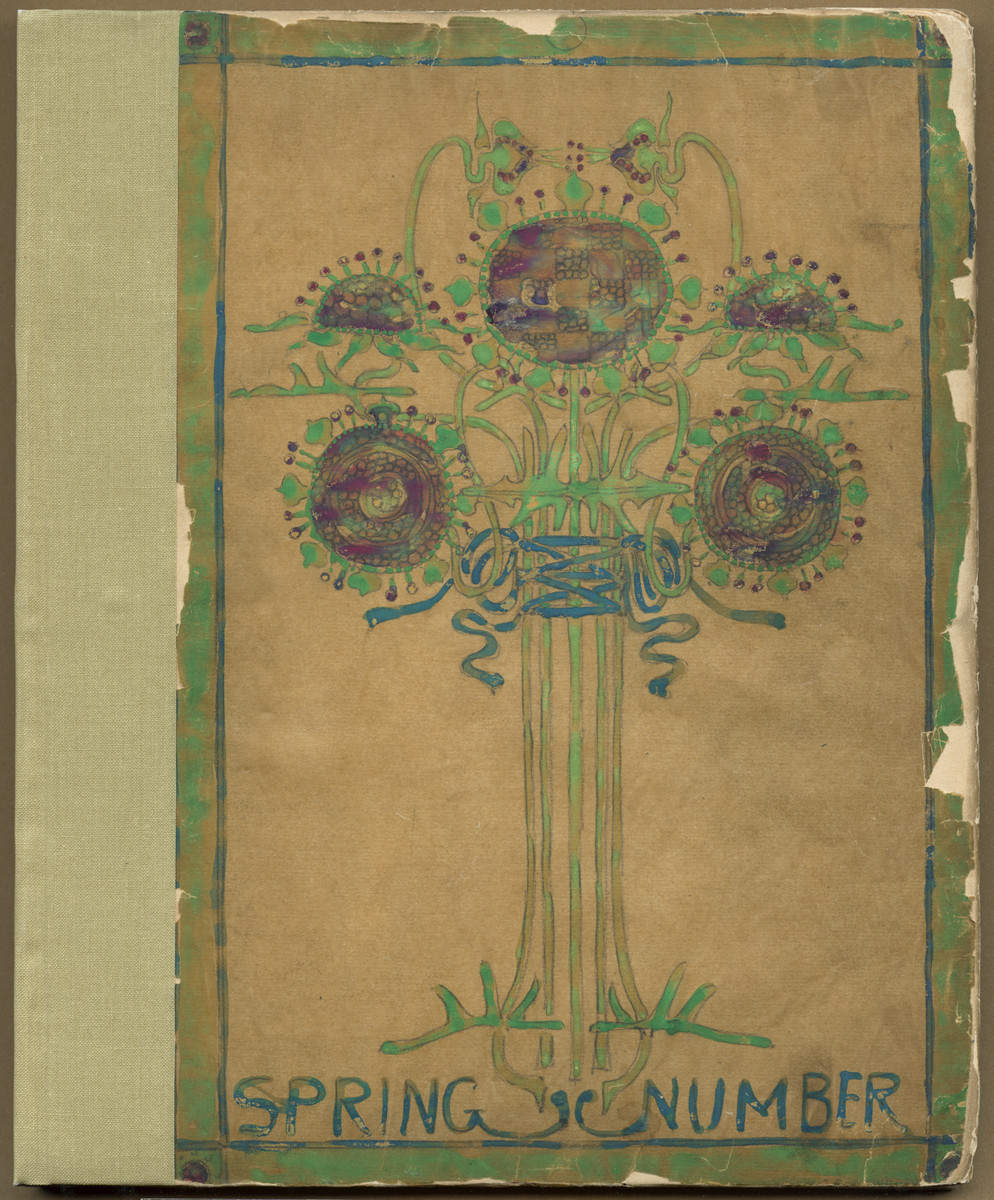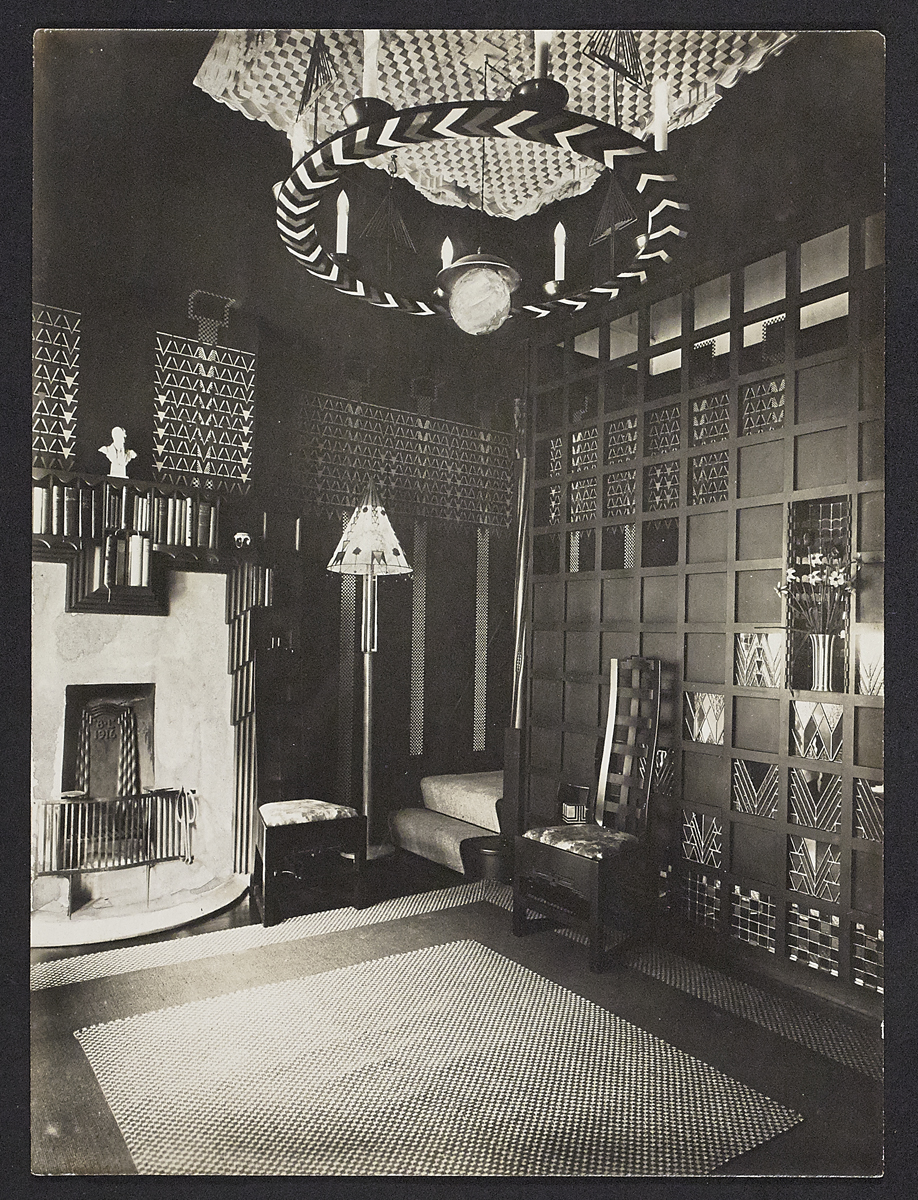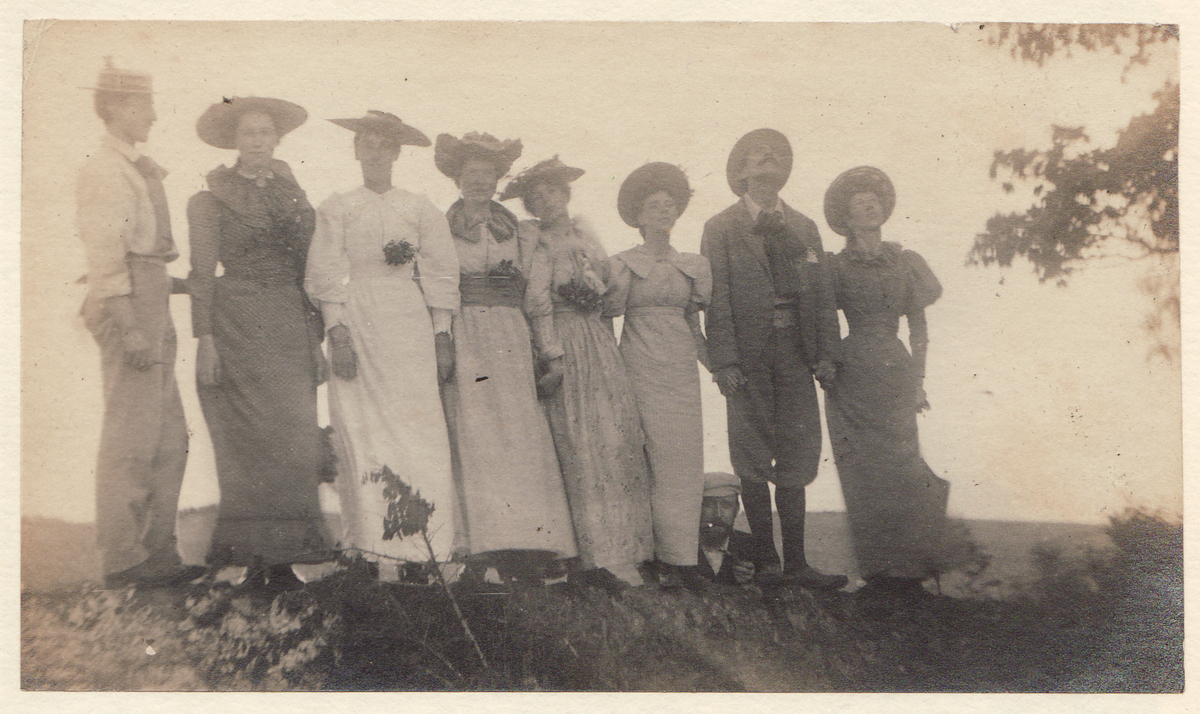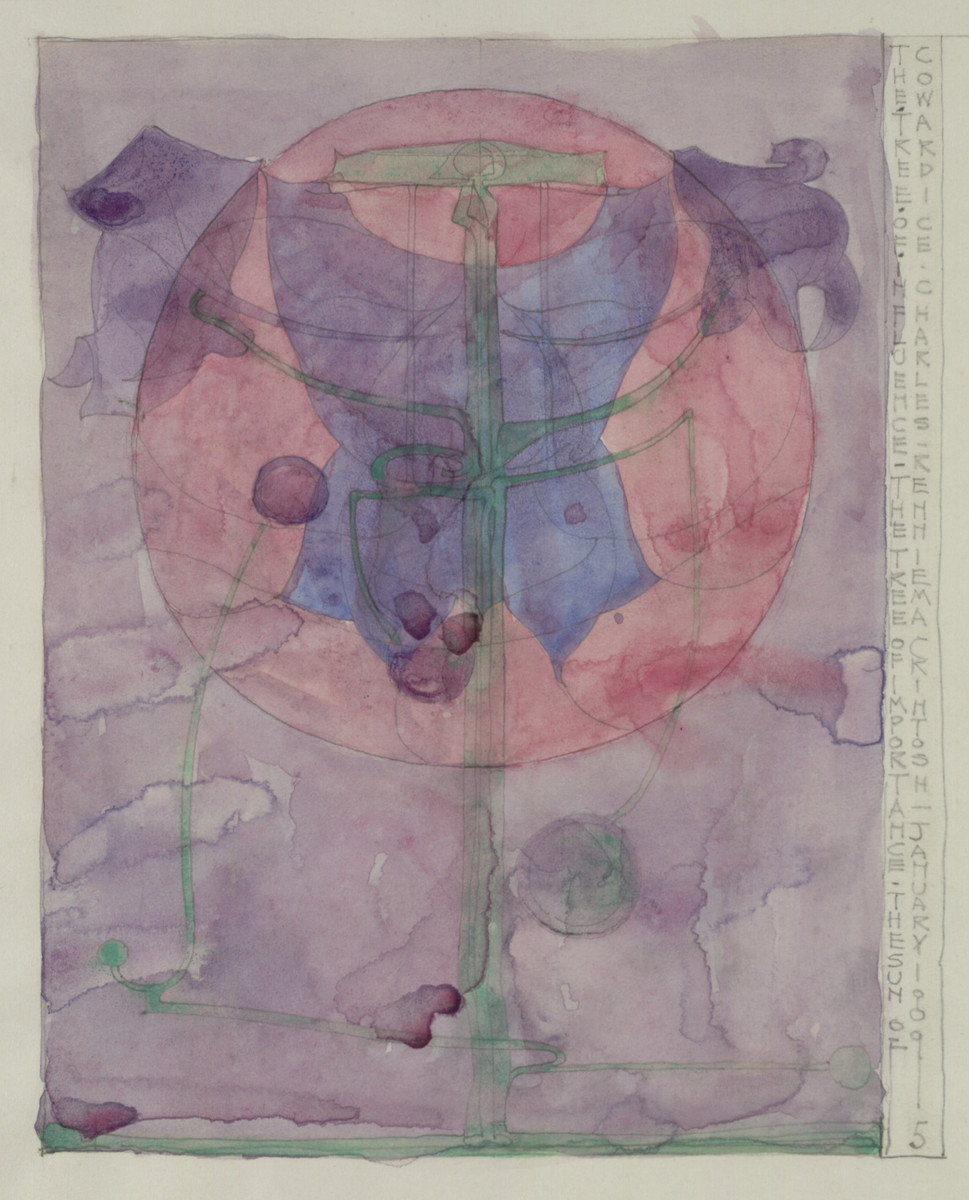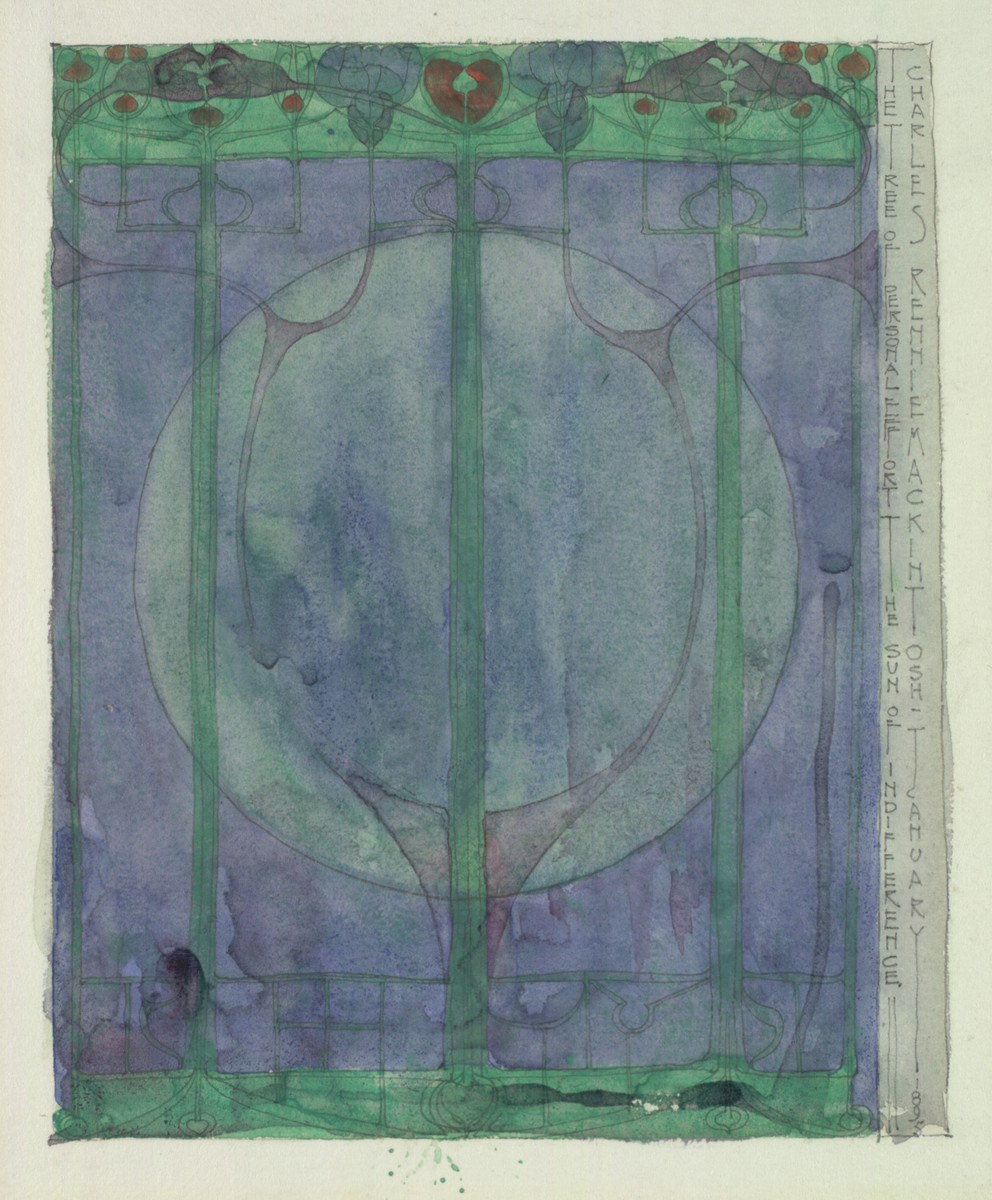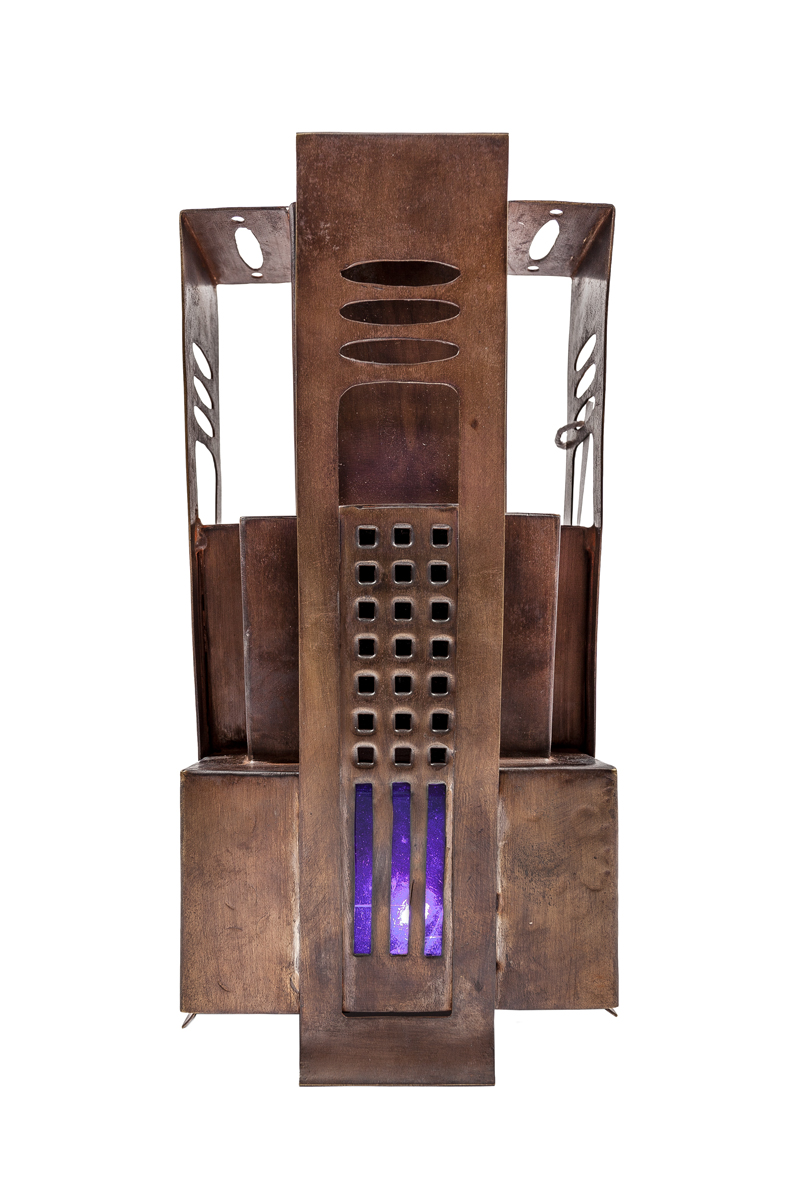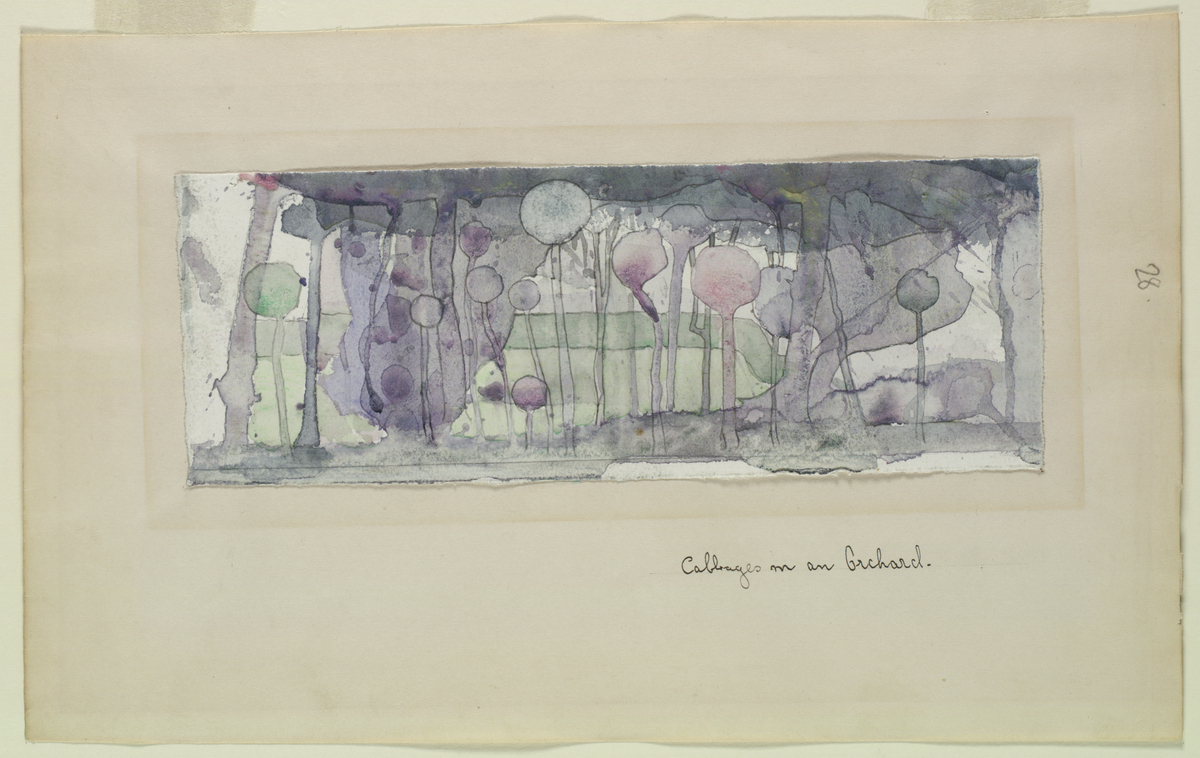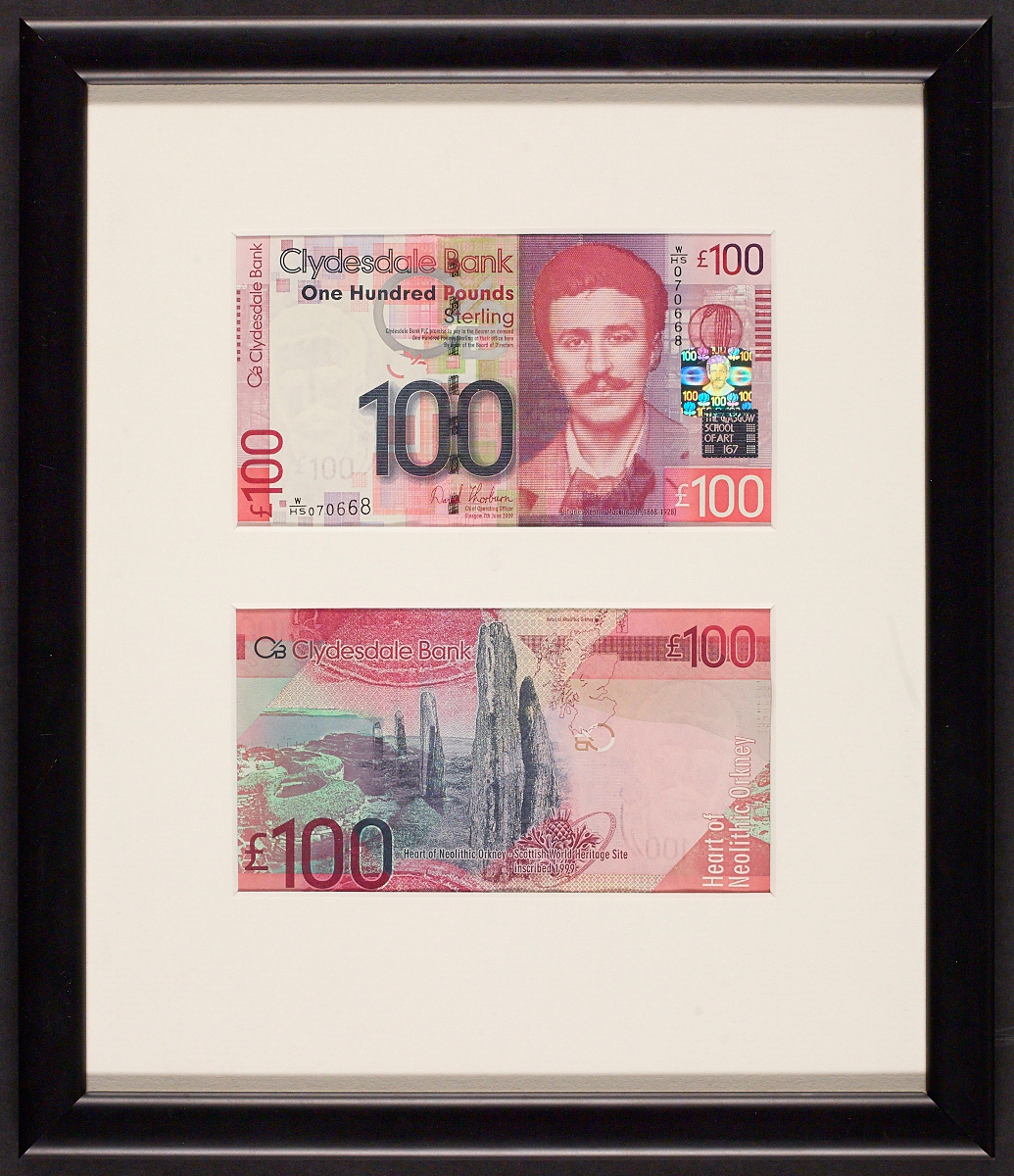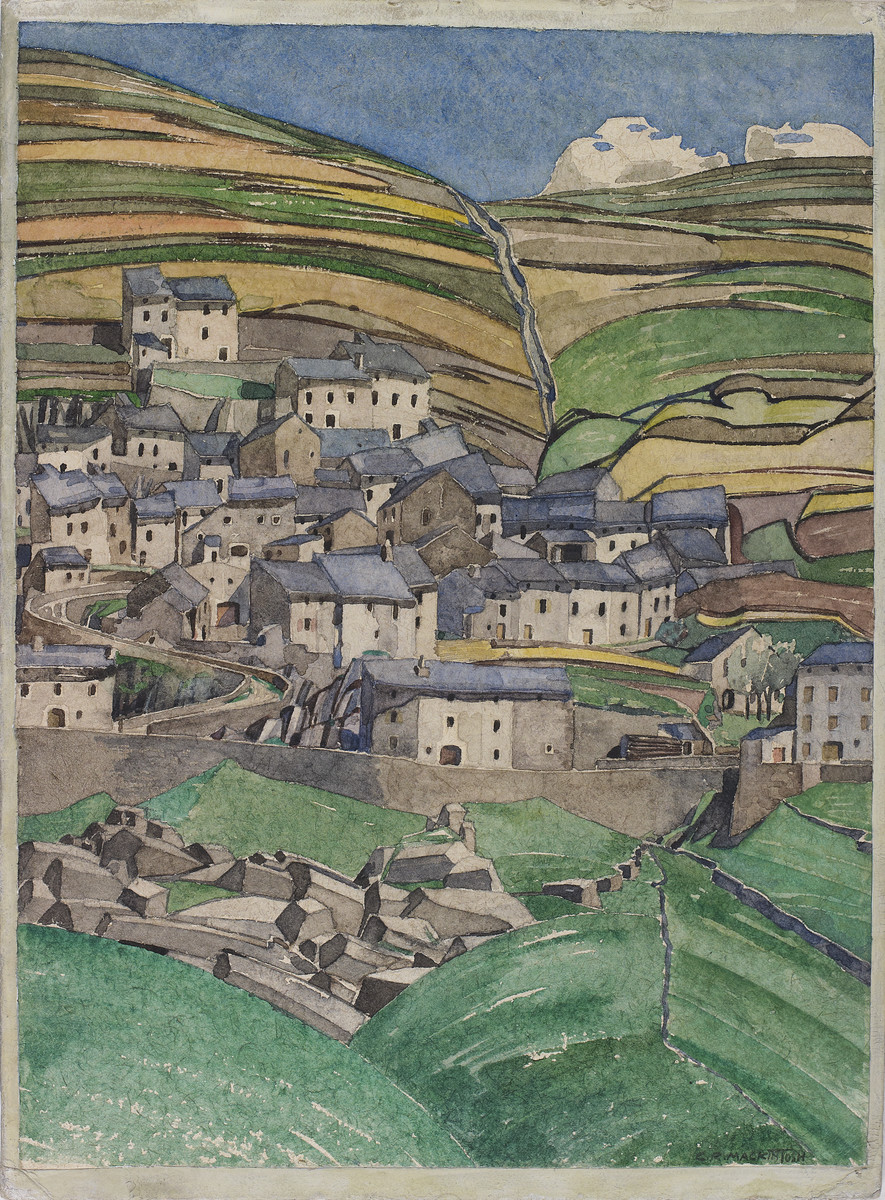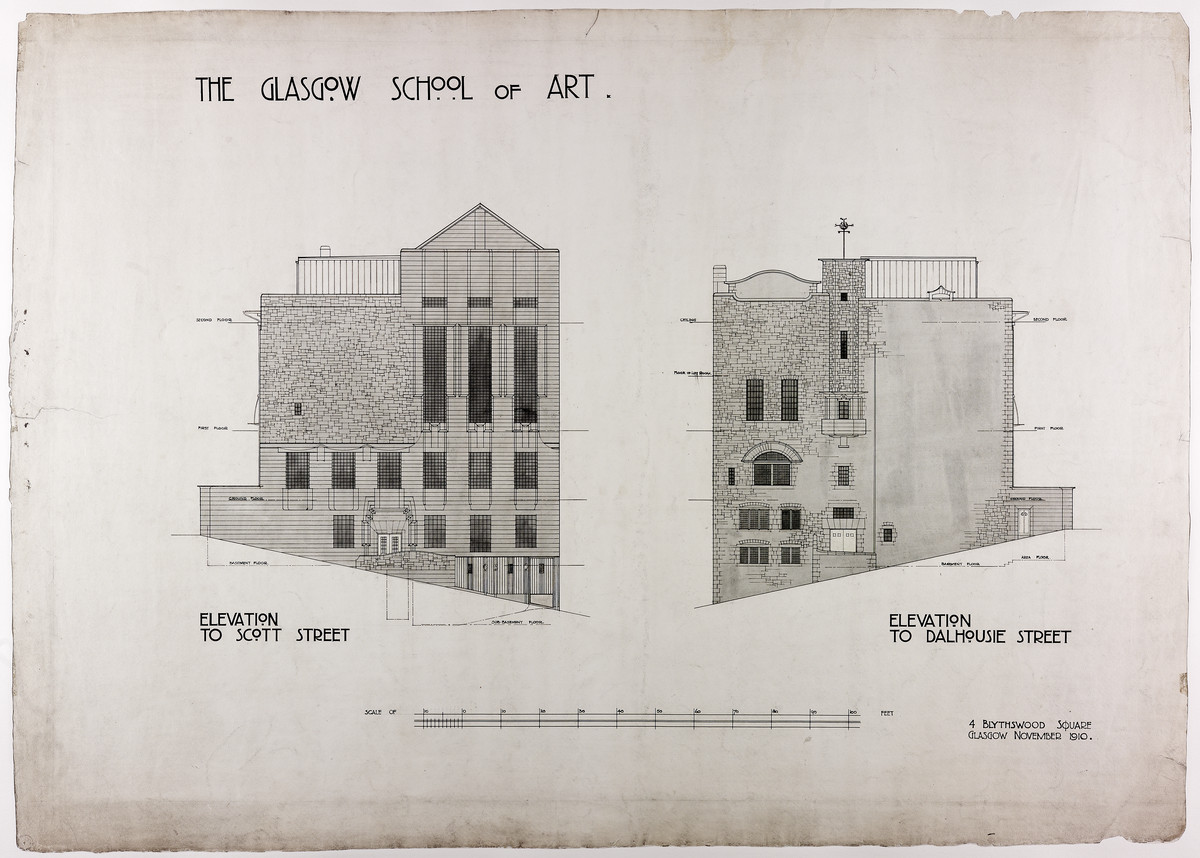Charles Rennie Mackintosh
The Glasgow School of Art holds a significant collection of the work of Charles Rennie Mackintosh, both from his student days and from across his career, including material related to the building he designed for the School. The Charles Rennie Mackintosh collection is one of 50 Recognised Collections of National Significance to Scotland.
Mackintosh’s professional and artistic training overlapped, and we can trace the progression of his early career from the Glasgow School of Art registers.
He enrolled in drawing courses in 1883, at 15 years old, and the first entry lists his father’s occupation (‘Clerk’) rather than his own. But from 1884 until 1889 he is listed at ‘Apprentice Architect’, reflecting his first professional pupillage in these same years with the architect John Hutchison (1841-1908). In 1889 he joined the firm of John Honeyman and Keppie, and from the second term of 1889 until 1891 the GSA registers list him as ‘Architect & Draftsman’, and finally from 1892 until 1894, his final enrolment, he is simply ‘Architect’.
GSA Archives and Collections has several important early artistic works by Mackintosh, including an 1892 watercolour entitled The Harvest Moon, which Mackintosh gifted to his friend and mentor John Keppie in 1894. It shows his developing interest in Symbolist abstraction: a subject purely from Mackintosh’s imagination, a stylised divine feminine figure presiding over the ripened fruits at her feet, perhaps offering a blessing on a frosty night. The divine feminine was a favourite theme of the Glasgow Style artists.
Other examples of his early work are within the group project The Magazine created largely by ‘The Immortals’ – a group of women artists and friends studying at the school in the early 1890s. Mackintosh’s contributions to the last three volumes of The Magazine in 1894-1896 suggest mythological interests, such as the ‘tree of life’ watercolours: The Tree of Influence – The Tree of Importance – The Sun of Cowardice and The Tree of Personal Effort – The Sun of Indifference of 1895.
For the for the April 1894 volume, he contributed a pencil and watercolour drawing, Cabbages in an Orchard, with an accompanying explanatory essay. In this rare piece of writing, Mackintosh seems to be on the defensive, expressing frustration that he is ‘forced’ to explain his work, which may be about more than this abstract drawing of cabbages:
‘…this confusing and indefinite state of affairs is caused by the artist – who is no common landscape painter, but is one who paints so much above the comprehension of the ordinary – ignorant public, that his pictures need an accompanying descriptive explanation such as the above.’[1]
It was through Mackintosh’s interaction with ‘The Immortals’ – at the introduction and encouragement of GSA Headmaster Francis Newbery – that he met his future wife and creative partner, Margaret Macdonald. Alongside Margaret’s sister Frances and his friend Herbert McNair, their shared creative vision and collaborative work eventually earned them the moniker ‘The Four’.[2]
It is unclear exactly when the Macdonald sisters met Mackintosh and McNair, but they were exhibiting together in November 1894 at the Glasgow School of Art Club exhibition. Although there was a kind of cross-pollination of influence, the first true collaborative work between Mackintosh and Macdonald is not seen until shortly before their 1900 marriage, in tearoom interiors designed for Catherine Cranston.[3]
Often, Macdonald would design bespoke elements of Mackintosh’s interiors, such as embroidered panels; or decorative details of his furniture, such as the copper repoussé panels inlaid into the doors of a Smoker’s Cabinet in the collection – a replica of an 1899 version shown at the 1900 Vienna Secession Exhibition, which Mackintosh had for his own use in their private home. This is also one of the items that has been 3D scanned and made available in AR as part of the Mac(k)cessibility Project.
The GSA Mackintosh collection also includes many architectural drawings, including the original competition brief and a series of plans, elevations, and sections for the School. This collection was instrumental for the restoration efforts after the 2014 fire, alongside a vast archive of ephemera from the Building Committee c.1896-1910.
The Archives and Collections has now also accessioned material salvaged from both the 2014 and 2018 fires, for example the Library Lampshades. This includes both recovered fragments kept as artefact, as well as a full set of reconstructed lights made from a mix of reclaimed and new material, in anticipation of a rebuilt Mackintosh building in future.
The digital collection also makes available items that were lost entirely in 2014 through photographs and, in the case of the Library desk, a digital reconstruction. Lost items by Mackintosh unfortunately include several examples of duplicate and unique furniture. Although the items have been lost, descriptions and images have been kept on the catalogue as they still provide valuable contextual information for researchers.
- [1] Charles Rennie Mackintosh, 'Cabbages in an orchard', in Lucy Raeburn, The Magazine III, November 1894, Album with original literature and artwork, 32.2 x 26 cm, November 1894, 29–30, Glasgow School of Art Archives & Collections.
- [2] The earliest known time they are called this appears in the Introduction to the 1933 Memorial Exhibition written by Jessie Newbery.
- [3] See: Robyne Calvert, A walk in Willowwood: Decoding the 'Willowwoods' of Dante Gabriel Rossetti and Margaret Macdonald Mackintosh (PDF). Journal of the Scottish Society for Art History, 17, 2012. pp. 24-31.
Further Reading
- Roger Billcliffe (2017): Charles Rennie Mackintosh and the Art of the Four, Frances Lincoln
- Roger Billcliffe (2009): Charles Rennie Mackintosh: The Complete Furniture, Furniture Drawings & Interior Designs, Cameron & Hollis
- Alison Brown (2018): Charles Rennie Mackintosh: Making the Glasgow Style, Glasgow Museums
- William Buchanan (2004): Mackintosh's Masterwork: The Glasgow School of Art, Glasgow School of Art Press
- Robyne Calvert (2018): Das Künstlerpaar: Mackintosh, Macdonald & The Rose Boudoir, Journal of the Charles Rennie Mackintosh Society - Celebratory Issue for Mackintosh 150 (102) pp. 32-35
- Robyne Calvert (2012): A walk in Willowwood: Decoding the 'Willowwoods' of Dante Gabriel Rossetti and Margaret Macdonald Mackintosh, Journal of the Scottish Society for Art History 17, pp. 24-31
- Alan Crawford (1995): Charles Rennie Mackintosh (World of Art), Thames and Hudson
- Wendy Kaplan (1996): Charles Rennie Mackintosh (Catalogue of the Exhibition), Abbeville Press in association with Glasgow Museums, London
- Ranald Lawrence (2020): The Victorian Art School: Architecture, History, Environment, Taylor & Francis
- James Macaulay (2010): Charles Rennie Mackintosh: A Biography, W.W. Norton & Company
- George Rawson (1996): Francis Henry Newbery and the Glasgow School of Art, PhD, University of Glasgow
- Pamela Robertson, Joseph Sharples and Nicky Imrie (2014): Mackintosh Architecture: Context, Making and Meaning, Hunterian Art Gallery (University of Glasgow)
- Pamela Robertson (2001): The Chronycle: The Letters of Charles Rennie Mackintosh to Margaret Macdonald Mackintosh, 1927, Hunterian Art Gallery, University of Glasgow
- Pamela Robertson, Hunterian Art Gallery - University of Glasgow and Walker Art Gallery (2006): Doves and Dreams: The Art of Frances Macdonald and J. Herbert McNair, Lund Humphries

